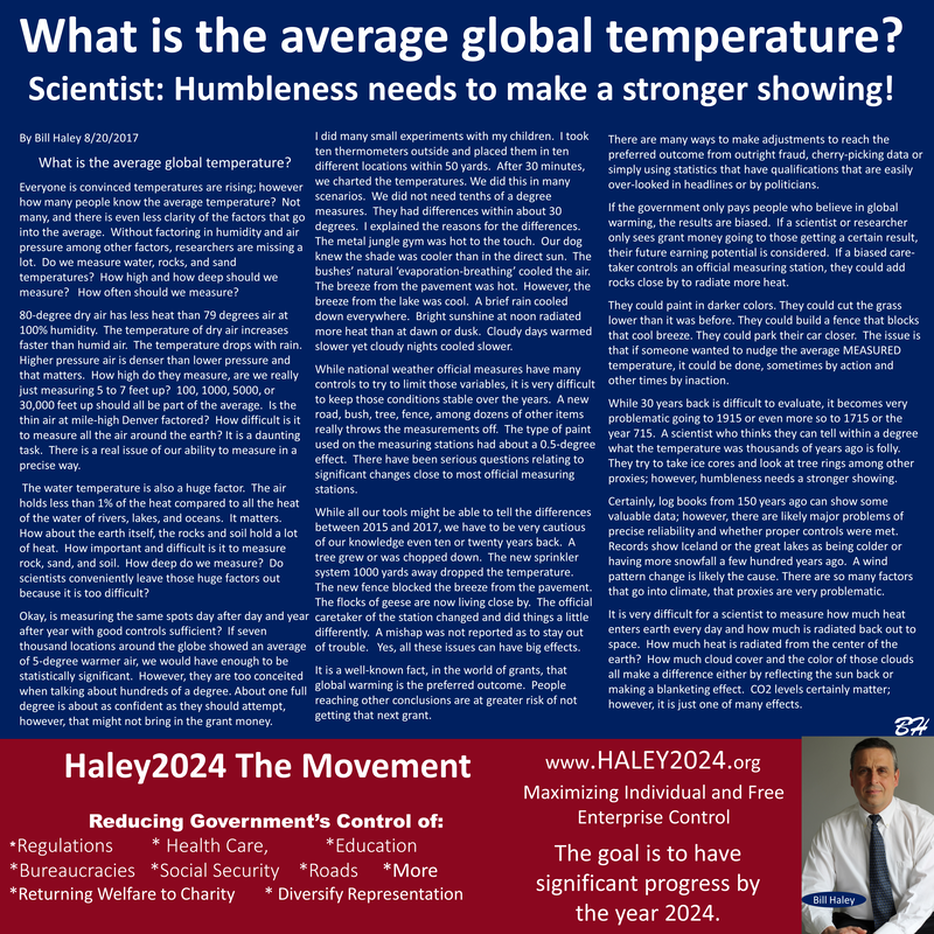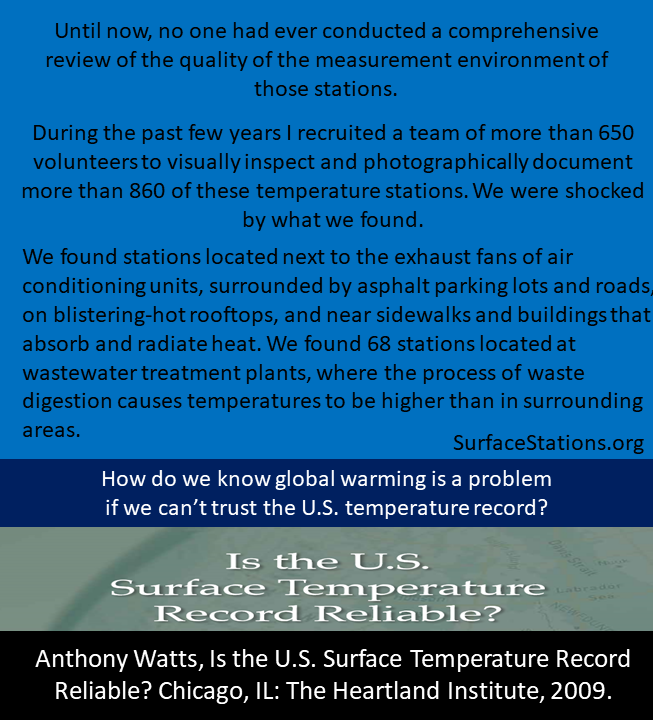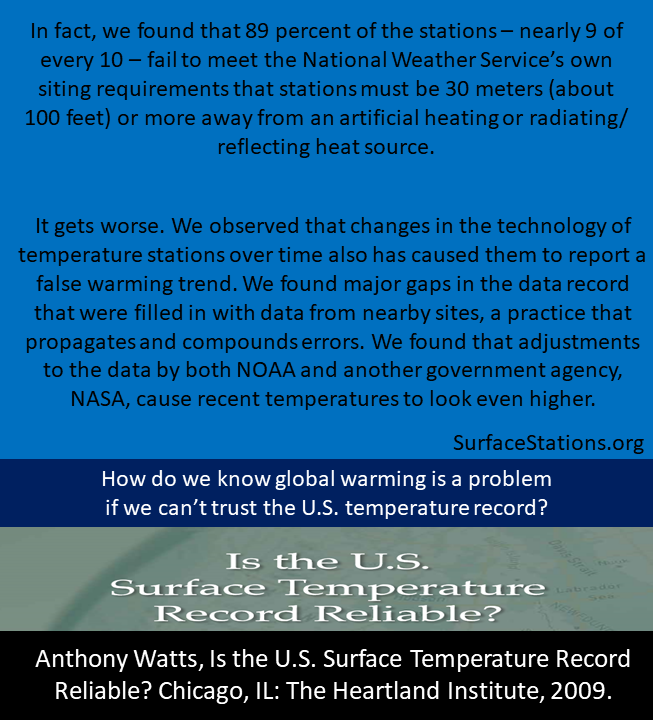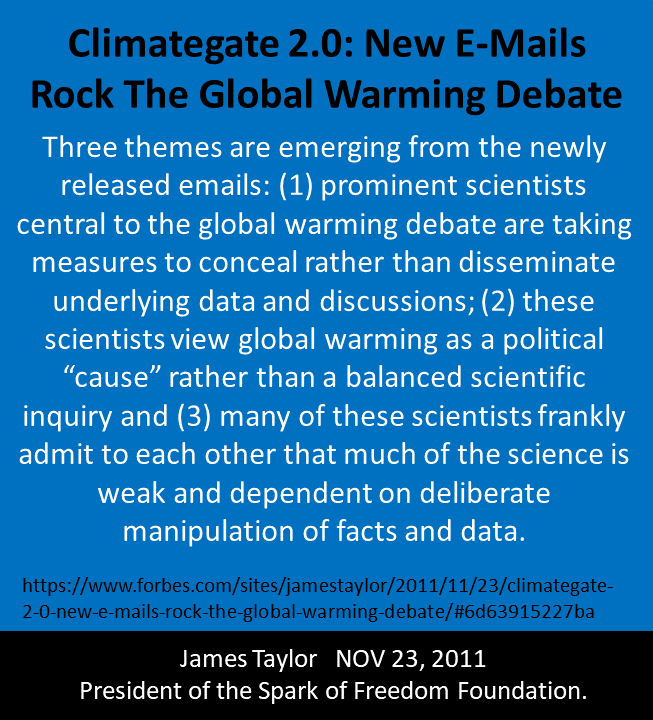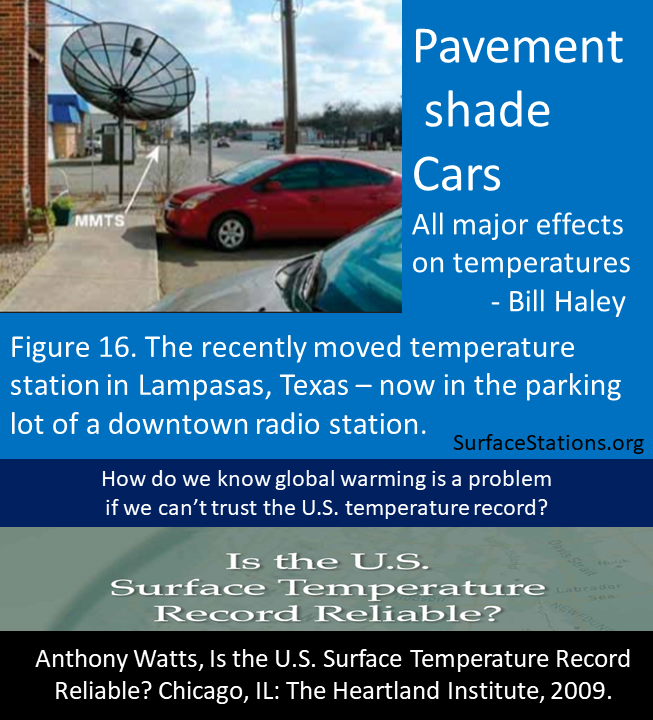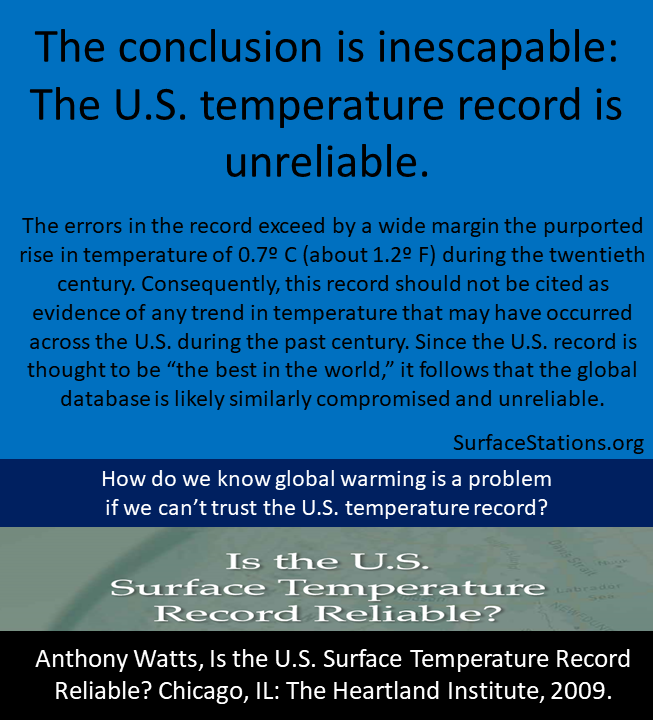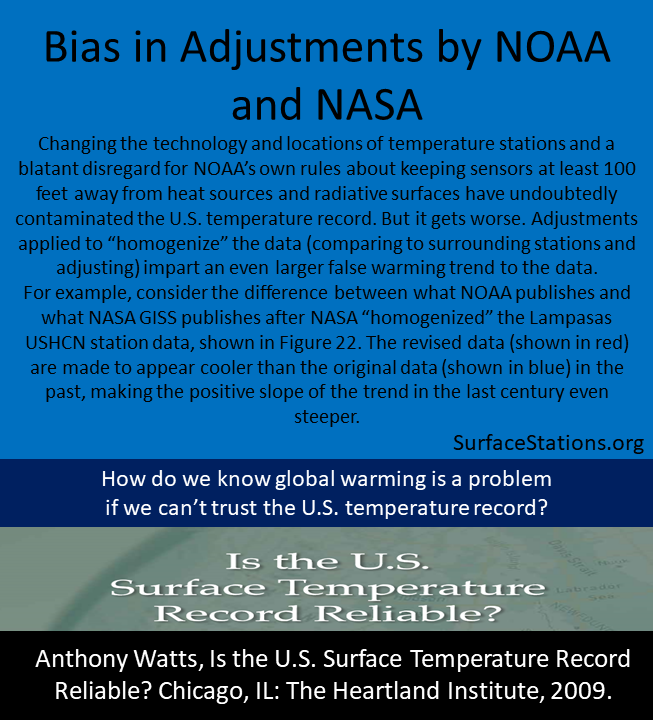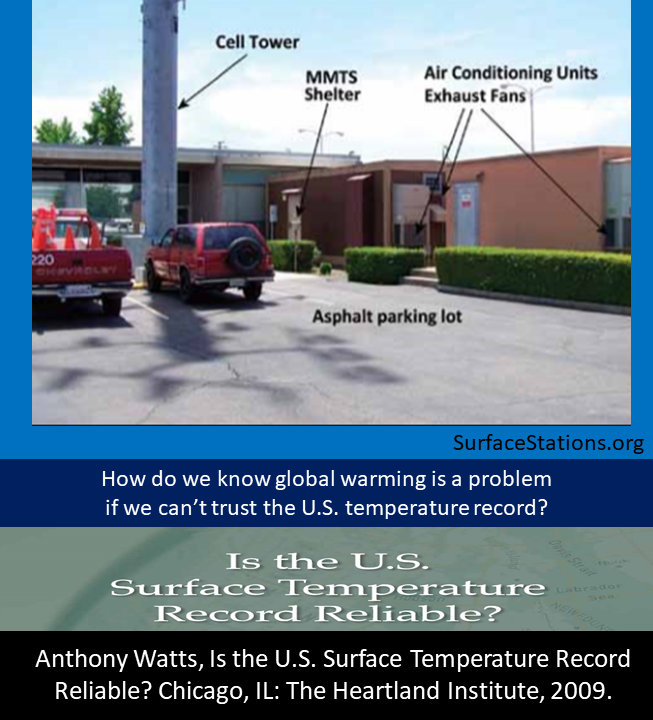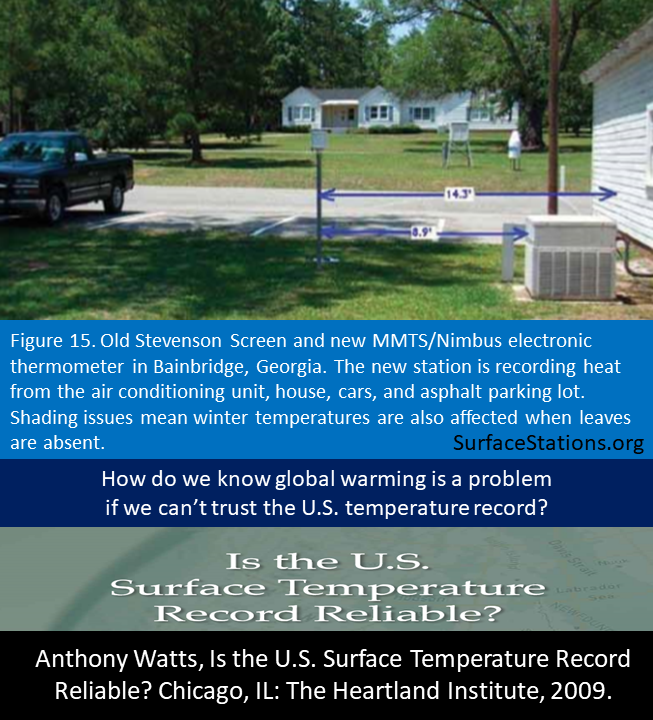|
Everyone is convinced temperatures are rising; however how many people know the average temperature? Not many, and there is even less clarity of the factors that go into the average. Without factoring in humidity and air pressure among other factors, researchers are missing a lot. Do we measure water, rocks, and sand temperatures? How high and how deep should we measure? How often should we measure?
|
|
80-degree dry air has less heat than 79 degrees air at 100% humidity. The temperature of dry air increases faster than humid air. The temperature drops with rain. Higher pressure air is denser than lower pressure and that matters. How high do they measure, are we really just measuring 5 to 7 feet up? 100, 1000, 5000, or 30,000 feet up should all be part of the average. Is the thin air at mile-high Denver factored? How difficult is it to measure all the air around the earth? It is a daunting task. There is a real issue of our ability to measure in a precise way.
|
|
The water temperature is also a huge factor. The air holds less than 1% of the heat compared to all the heat of the water of rivers, lakes, and oceans. It matters. How about the earth itself, the rocks and soil hold a lot of heat. How important and difficult is it to measure rock, sand, and soil. How deep do we measure? Do scientists conveniently leave those huge factors out because it is too difficult?
|
|
Okay, is measuring the same spots day after day and year after year with good controls sufficient? If seven thousand locations around the globe showed an average of 5-degree warmer air, we would have enough to be statistically significant. However, they are too conceited when talking about hundreds of a degree. About one full degree is about as confident as they should attempt, however, that might not bring in the grant money.
|
|
I did many small experiments with my children. I took ten thermometers outside and placed them in ten different locations within 50 yards. After 30 minutes, we charted the temperatures. We did this in many scenarios. We did not need tenths of a degree measures. They had differences within about 30 degrees. I explained the reasons for the differences. The metal jungle gym was hot to the touch. Our dog knew the shade was cooler than in the direct sun. The bushes’ natural ‘evaporation-breathing’ cooled the air. The breeze from the pavement was hot. However, the breeze from the lake was cool. A brief rain cooled down everywhere. Bright sunshine at noon radiated more heat than at dawn or dusk. Cloudy days warmed slower yet cloudy nights cooled slower.
|
|
|
While national weather official measures have many controls to try to limit those variables, it is very difficult to keep those conditions stable over the years. A new road, bush, tree, fence, among dozens of other items really throws the measurements off. The type of paint used on the measuring stations had about a 0.5-degree effect. There have been serious questions relating to significant changes close to most official measuring stations.
|
|
While all our tools might be able to tell the differences between 2015 and 2017, we have to be very cautious of our knowledge even ten or twenty years back. A tree grew or was chopped down. The new sprinkler system 1000 yards away dropped the temperature. The new fence blocked the breeze from the pavement. The flocks of geese are now living close by. The official caretaker of the station changed and did things a little differently. A mishap was not reported as to stay out of trouble. Yes, all these issues can have big effects.
|
|
It is a well-known fact, in the world grants, that global warming is the preferred outcome. People reaching other conclusions are at greater risk of not getting that next grant. There are many ways to make adjustments to reach the preferred outcome from outright fraud, cherry-picking data or simply using statistics that have qualifications that are easily over-looked in headlines or by politicians.
|
|
If the government only pays people who believe in global warming, the results are biased. If a scientist or researcher only sees grant money going to those getting a certain result, their future earning potential is considered. If a biased care-taker controls an official measuring station, they could add rocks close by to radiate more heat.
|
|
They could paint in darker colors. They could cut the grass lower than it was before. They could build a fence that blocks that cool breeze. They could park their car closer. The issue is that if someone wanted to nudge the average MEASURED temperature, it could be done, sometimes by action and other times by inaction.
|
|
While 30 years back is difficult to evaluate, it becomes very problematic going to 1915 or even more so to 1715 or the year 715. A scientist who thinks they can tell within a degree what the temperature was thousands of years ago is folly. They try to take ice cores and look at tree rings among other proxies; however, humbleness needs a stronger showing.
|
|
Certainly, log books from 150 years ago can show some valuable data; however, there are likely major problems of precise reliability and whether proper controls were met. Records show Iceland or the great lakes as being colder or having more snowfall a few hundred years ago. A wind pattern change is likely the cause. There are so many factors that go into climate, that proxies are very problematic.
|
|
It is very difficult for a scientist to measure how much heat enters earth every day and how much is radiated back out to space. How much heat is radiated from the center of the earth? How much cloud cover and the color of those clouds all make a difference either by reflecting the sun back or making a blanketing effect. CO2 levels certainly matter; however, it is just one of many effects.
|
